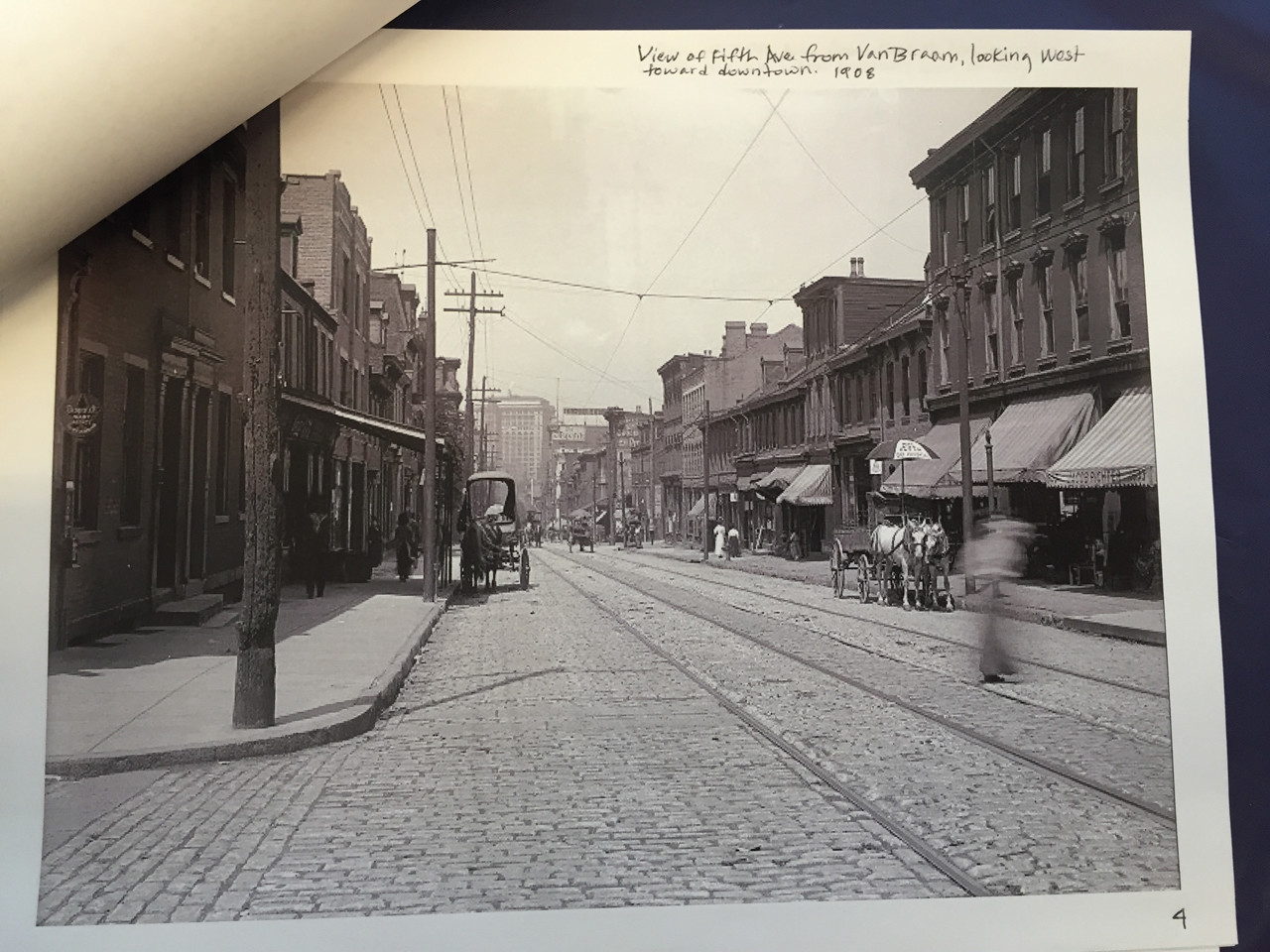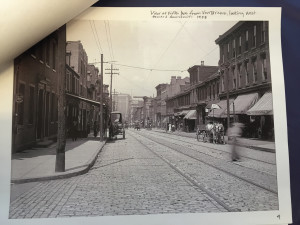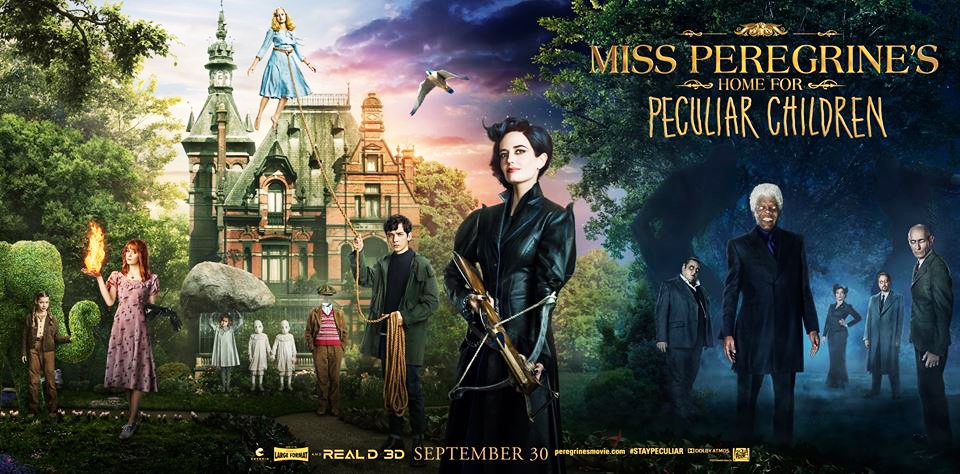

This 1908 photograph of the Hill District shows the view of Fifth Avenue from Van Braam Street. The photo was part of a museum created by Duquesne students.
By Sydnie Pennington | The Duquesne Duke
Duquesne graduate students helped to create a one-weekend-only “pop-up” museum in the Hill District last Saturday and Sunday to help residents there tell stories about the community’s past.
Public history students from the class of Professor Alima Bucciantini planned and curated the display, which they titled “Our Hill, Our Home, Our Stories: Collecting Our Neighborhood.” The students gathered personal items from residents of the Hill and displayed them at the Blakey Center for two days.
Bucciantini said the goal was to show the broader Pittsburgh community the rich culture and history of the area that borders the Bluff.
Ryan Henderson, one of the students who helped to coordinated the museum, said, “The image of crime overwhelms the amount of culture in the area, and the museum is trying to remind people of the culture there.”
History student Heather Williams described the project as an opportunity to “get down to the community level and say, ‘Your stories are important and you matter.’”
According to Bucciantini, the Hill has experienced many decades of cultural evolution and revolution, beginning with the Jazz Age. This was followed by the Great Migration, a movement of six million African Americans from rural areas to cities. Many of those who moved to Pittsburgh settled in the Hill, which then became a critical location during Pittsburgh’s civil rights movement of the 1960s.
“Our Hill, Our Home” captured the highlights of these eras with items typical to museums, such as photos and art, as well as non-traditional items, including signage from a play written by Hill native August Wilson during the Jazz Age.
According to Bucciantini, the items donated to the museum showed value for the past, as well as optimism for the years to come.
“The members of the Hill know what oppression looks like, and they have experience crime, but there is hope for the future, and the items contributed help show that to the community,” Bucciantini said.
The museum featured art from local school children that captured how they felt about their home. A common theme throughout the art was depictions of heroism and open-mindedness. One student created a canvas depicting military members returning from combat abroad, while another painted a canvas promoting equality for same-sex couples.
The museum included traditional artwork from many nationalities. Glass lanterns made by exchange students that come to the Hill District from a small urban area of Northern Ireland and African art contributed to the global esthetic that flowed through the local event.



